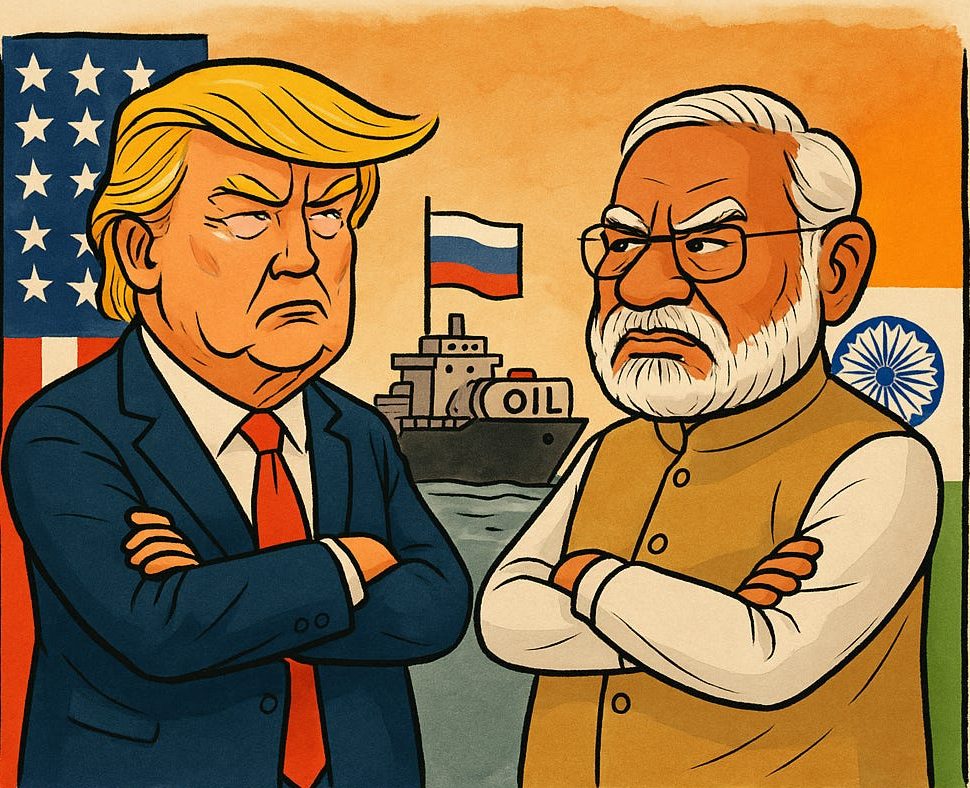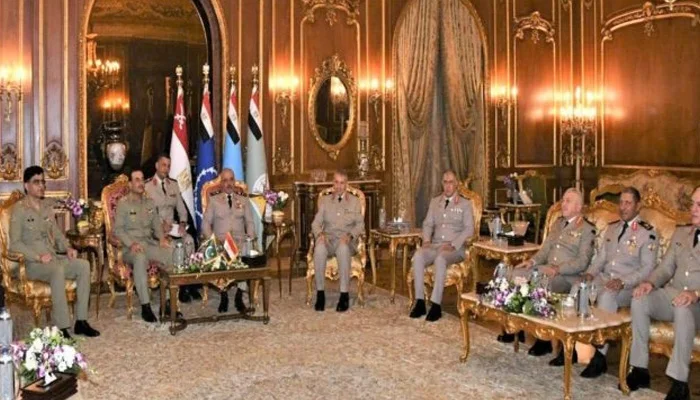The warm hugs and handshakes between U.S. President Donald Trump and Indian Prime Minister Narendra Modi have given way to a bitter tariff battle. Once lavishing praise on each other, the two leaders now find their nations embroiled in escalating trade tensions.
last week, President Trump announced that the base tariff rate on Indian goods — previously set at 25% — would be increased to a steep 50% later this month. The move is seen as a response to India’s continued purchase of Russian oil, despite U.S. pressure to cut such ties.
On Wednesday, Trump announced a sharp increase in U.S. tariffs on Indian goods, raising the rate from 25% to 50%. The move, which takes effect on August 27, comes in response to India’s continued purchases of Russian oil — a practice Washington says undermines efforts to pressure Moscow into ending its war in Ukraine.
This makes India the most heavily taxed US trading partner in Asia and places it alongside Brazil, another nation facing steep US tariffs amid tense relations.
Modi’s reaction was swift and defiant, labeling the tariffs “unfair and unjustified” and pointing out that other major Russian oil buyers, like Turkey and European countries, faced no similar penalties. Modi pledged to defend Indian farmers and industries even at “a very heavy price.”
India has already delayed some planned acquisitions of US defense equipment and is reconsidering its stance in ongoing trade negotiations. More importantly, New Delhi is signaling intentions to deepen economic engagement with alternative platforms—most notably the expanded BRICS coalition—to reduce dependency on US leverage.

A New Economic Reality:
The global economic environment of 2025 is vastly different from that of two decades ago. With the inclusion of Egypt, Ethiopia, Iran, Saudi Arabia, and the UAE, BRICS now represents an economy valued at around $30 trillion—approximately 30 to 40 percent of global GDP—and accounts for over a fifth of international trade. This growing bloc presents a potential, albeit still emerging, counterbalance to Western-dominated trade and financial systems.
Although the US dollar remains dominant—comprising roughly 58% of global reserves and payment transactions—its supremacy is increasingly challenged. India’s burgeoning trade with Russia, estimated between $65 and $69 billion in 2023–24, is frequently settled in rupees and roubles, bypassing the dollar. Such arrangements, repeated across multiple partners, gradually erode the dollar’s automatic advantage and reduce the effectiveness of US sanctions and tariff threats.
India’s critical role in global supply chains further complicates Washington’s position. The country produces about 60% of the world’s generic medicines, exports $28 billion worth of pharmaceuticals annually, and delivers $150 billion in IT and business services, much of which supports American companies. Additionally, around four million Indians work in the US tech sector, with over 500,000 STEM graduates entering the workforce yearly. Tariffs that restrict Indian exports risk increasing costs for American consumers, disrupting supply chains, and weakening US corporate competitiveness.
India’s true strength lies in its “optionality”—the ability to nurture diverse partnerships without full commitment to any single alliance. Modi has maintained close security cooperation with the US through the Quad while simultaneously championing a more assertive BRICS. India can pivot towards the US on Indo-Pacific security, deepen defense and energy ties with Russia, or expand trade and investments with Gulf and African nations. Few global powers possess such diplomatic flexibility.
This means that heavy-handed economic pressure is unlikely to succeed and may instead accelerate India’s pivot toward non-Western economic frameworks. Historically, prolonged tariff conflicts lead to significant trade realignment within three to five years, usually benefiting BRICS and other non-aligned economies.
Limited leverage: Tariffs have little impact on a country with viable economic alternatives. Instead of reversing course, India may accelerate the adoption of non-dollar trade settlements, use alternative payment systems more widely, and increase South–South investments.
Domestic fallout: Higher costs for pharmaceuticals, IT disruptions, and strain on sectors from agriculture to aerospace will not go unnoticed by US voters or corporate interests.
Multipolarity reinforcement: Other countries like Indonesia and Brazil may interpret the US’s actions as selective and politically motivated, encouraging deeper engagement with alternative economic blocs to sidestep American pressure.
This is not to say the US lacks influence. The American market remains vital for Indian exports and a critical partner in technology, defense, and education. However, tariffs alone are more likely to alienate India than to align it with Washington’s objectives.
A smarter strategy would mix engagement with targeted pressure: advancing a stalled bilateral trade deal; collaborating on shared priorities such as semiconductors, clean energy, and pharmaceuticals; and offering incentives that integrate India more deeply into US-linked supply chains. At the same time, any restrictions should be specific, calibrated, and tied to clear policy goals rather than broad, punitive tariff hikes driven by political emotion.
The move to impose 50% tariffs reveals more about India’s resilience than its vulnerability. Modi’s government has the scale, economic diversity, and geopolitical reach to weather short-term shocks and adapt. In doing so, India will likely accelerate the emergence of a more pluralistic global economic order—one where US dominance over the rules is increasingly limited.
If Washington believes that coercive tariffs will swiftly force India’s compliance, it risks misreading the strategic landscape. Instead of drawing India closer, the policy may push India further away—helping to build the very multipolar world that the US hopes to avoid.
India’s Reaction:
Indian journalist Barkha Dutt told CNN that nobody in India believes the current tensions have anything to do with disputes or disagreements over trade. She added that Indians also do not believe this is truly about India’s purchase of Russian oil.
Dutt pointed out that India has repeatedly highlighted the hypocrisy of the United States—particularly under the Trump administration—on this issue.

















